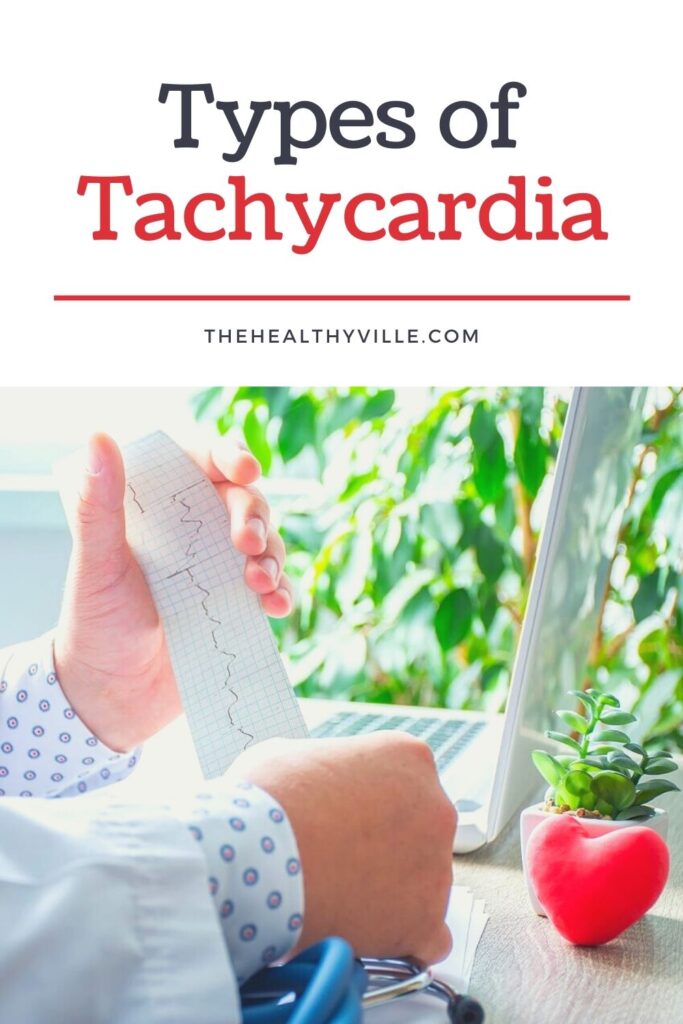The types of tachycardia are arrhythmias characterized by increased heart rate. These may or may not be a symptom of an underlying disease. Learn more about them!
There are several types of tachycardia. This condition is defined as an increase in heart rate, that is, in the number of heart beats per unit time. According to the US National Library of Medicine, this pathology falls within arrhythmias, among which are brachycardia (decrease in pulsations) and irregular pulse.
Clinical studies estimate that the incidence of sudden cardiac death in the general population is 1 in 1,000 people per year in Western Europe. Despite the low percentage of the population it affects, it is essential to know the types of cardiac disorders to be prepared. In this opportunity, we discuss in detail the forms of tachycardia.
About tachycardias and their distribution
Before diving fully into these arrhythmic processes, we find it interesting to shed some light on epidemiological studies that put into perspective the importance of tachycardias at a global level. We show you some representative figures:
Supraventricular tachycardias, which we will describe in later sections, affect 0.4 to 1% of the population, especially the elderly.
Wolff-Parkinson-White syndrome (WPW), a heart condition involving tachycardias, has a calculated incidence of 0.04 people per 1000 individuals. Of course, its sudden death rate can reach 4%.
Focal atrial tachycardia affects 0.34% of the youth population, although these are asymptomatic.
As we can see, eventual tachycardias are episodes that anyone can experience, but that these translate into pathologies is more complex. Their incidence is very low, but even so, understanding them is essential to rule out a serious clinical picture.
The heart is an organ with four separate chambers through which blood pumps: two upper atria and two lower ventricles. It is important to understand this concept to understand the pathologies that we will see next.
Types of tachycardia
There are many types of tachycardias, as they are classified according to the origin and cause of the abnormally fast heartbeat. Below, we show you the most relevant ones.
Supraventricular tachycardia
According to specialized bibliographic sources, supraventricular tachycardia is that which occurs somewhere above the ventricles of the heart (sinus node or atrial tissue, for example). Their general incidence is 2.25 per 1,000 inhabitants, so they are rare.
Still, the source cited above shows that people with associated pathologies, such as strokes (when blood does not reach the brain correctly) or patients with a previous diagnosis of heart failure, are much more likely to suffer it.
Ventricular tachycardia
Ventricular tachycardia is tachycardia that originates with abnormal electrical signals in the lower chambers of the heart (the ventricles). These episodes of ventricular tachycardia are of two types:
- Not sustained: brief, lasting a couple of seconds without causing major problems. They affect 0.8% of the population without previous heart disease.
- Sharps: longer duration. They can be a medical emergency.
Ventricular fibrillation
Journal articles specialized in cardiology indicate that this type of tachycardia is dangerous. It happens when accelerated electrical impulses prevent the ventricles from pumping blood properly. This can cause sudden death if you do not act quickly.
In most cases (75 to 80%), sudden death from ventricular fibrillation is accompanied by previous coronary heart disease. The only possible treatment to prevent the patient’s death is the use of a defibrillator, which causes restoration of normal electrical activity of the heart.
Atrial fibrillation
The mechanism of this variant is the same as the previous one, but chaotic electrical impulses in this case occur in the atria. As detailed in a study published in Circulation Research, it is the most common variant in clinical and surgical practice.
The prevalence is from 0.4 to 1%, a much higher value than those shown previously. Recommendations are it also to correspond to a third of all admissions for heart rhythm disorders.
The risk factors for suffering it are the following:
- Advanced age, as its prevalence increases after 65 years (5.9% of the elderly suffer from it).
- Arterial hypertension.
- Having suffered an acute myocardial infarction.
- Heart failure.
- Heart valve disease, when one or more valves of the heart do not work well.
This pathology can be suspected by symptoms such as fatigue, shortness of breath, palpitations and chest pain. The treatments applied to the patients who suffer it are focused, above all, on avoiding the stroke already mentioned.
Atrial flutter
Another type of tachycardia is atrial flutter, due to a rapid atrial rate but at a regular rate. This variant is closely due to atrial fibrillation, as it often occurs with it.
What should be clear about the types of tachycardia?
It is possible that more than one reader has increased the pulsations when reading these lines. After all, who hasn’t ever had a chest ache? Therefore, it is necessary to clarify that many tachycardias do not have underlying clinical reasons.
Read more: How to Treat Tachycardia Caused by Anxiety and Control Your Heartbeat?
Studies show that emotional states like anxiety, stress, caffeine and drug use, or panic attacks can also promote them. So if studies like electrocardiograms have already been done, and arrhythmias have not been diagnosed, there is no reason to fear in principle.
Don’t forget to SHARE the types of tachycardia with your friends and family on your social networks!

